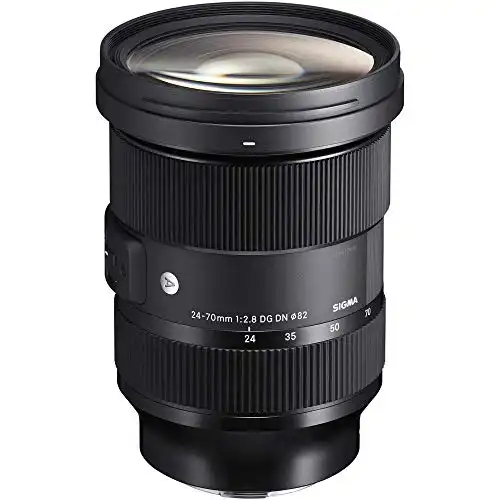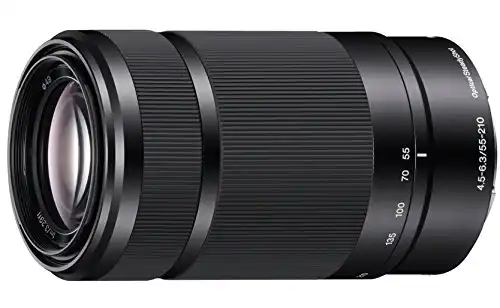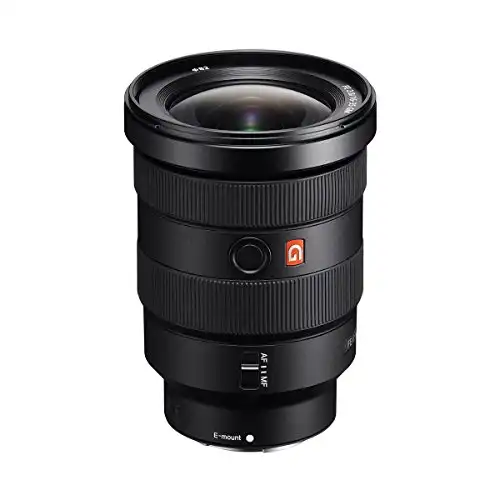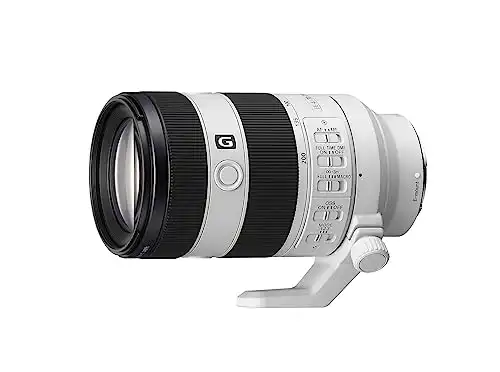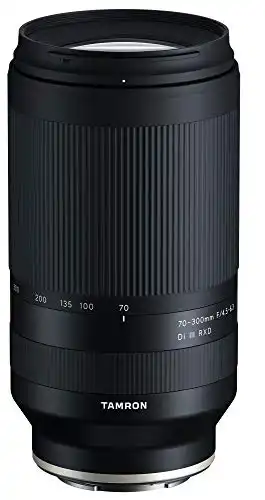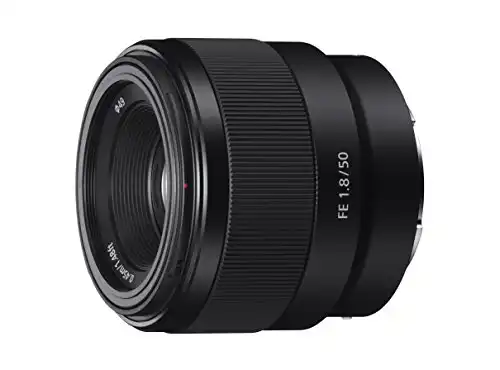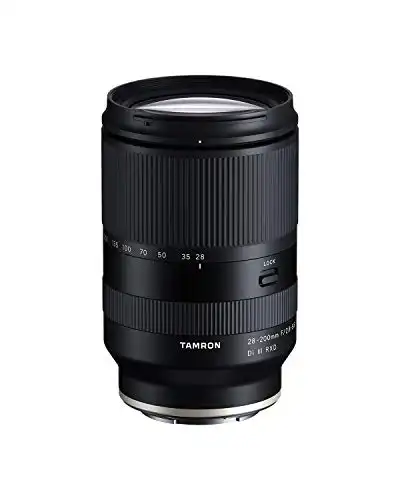Imagine yourself embarking on a photographic journey, where every frame captures the essence of your travels with breathtaking clarity. The key to achieving such visual brilliance lies in finding the perfect travel lens for your Sony A7IV.
But with a plethora of options available, how do you choose the one that will elevate your photography to new heights?
In this discussion, we will delve into the world of travel lenses, exploring their features, capabilities, and which one reigns supreme for the Sony A7IV. Get ready to unlock the true potential of your camera and take your travel photography to unparalleled levels of excellence.
Table of Contents
ToggleKey Takeaways
- The Sigma 24-70mm F2.8 DG DN Art lens offers exceptional image quality and versatility for different lighting conditions.
- The Sony E 55-210mm F4.5-6.3 lens provides a wide zoom range and great value for budget-conscious travelers.
- The Sony FE 16-35mm F2.8 GM II lens offers stunning resolution and a lightweight design for easy travel.
- The Tamron 70-300mm F/4.5-6.3 Di III RXD lens is the world's smallest and lightest telephoto lens for Sony full-frame E-mount mirrorless cameras.
The 7 Best Travel Lenses for Sony A7IV [Detailed Review]
Let's take a closer look at the best travel lenses for your Sony A7IV. The top contenders include the Sigma 24-70mm F2.8 DG DN Art for Sony E Lens, which offers exceptional overall performance. If you're on a budget, the Sony E 55-210mm F4.5-6.3 Lens provides great value for its price.
For those seeking premium quality, the Sony FE 16-35mm F2.8 GM II is the way to go. If high-end performance is your priority, the Sony FE 70-200mm F4 G OSS Lens won't disappoint.
Lastly, if you prefer a lightweight option, the Tamron 70-300mm F/4.5-6.3 Di III RXD is your best bet.
1. Sigma 24-70mm F2.8 DG DN Art for Sony E Lens (Best Overall)
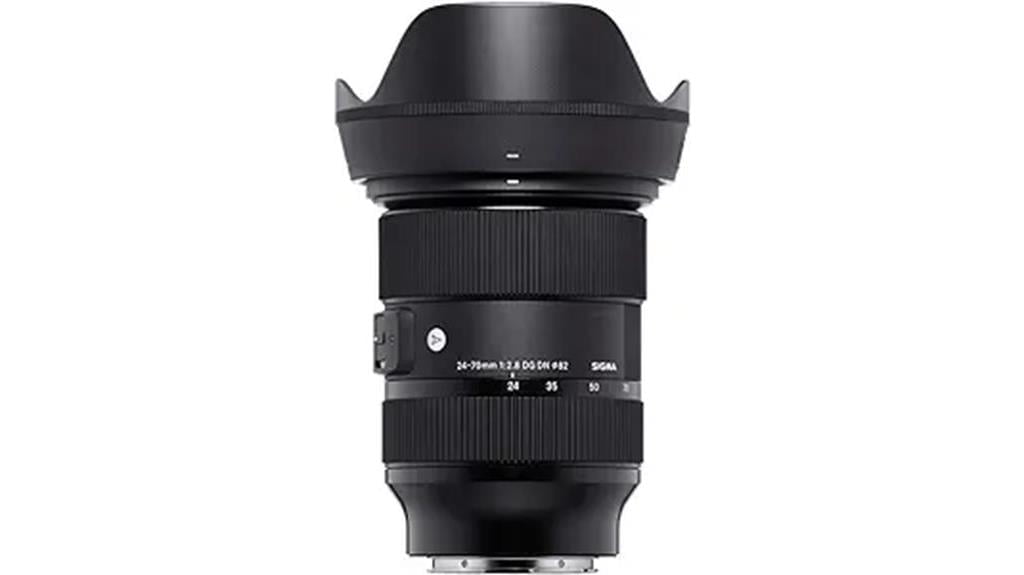
For photographers looking for the best overall travel lens for the Sony A7IV, the Sigma 24-70mm F2.8 DG DN Art for Sony E Lens is an excellent choice. This lens offers exceptional optical performance, making it ideal for high megapixel DSLRs.
With a constant aperture of 2.8, it provides versatility in different lighting conditions. The lens also features an Optical Stabilization (OS) system to compensate for camera shake, ensuring sharp and clear images. Its rugged metal barrel ensures durability, while the dust and splash-proof construction makes it suitable for various photography genres.
The Sigma 24-70mm lens offers similar optical performance to the Sony G Master 24-70mm lens at a more affordable price, making it a valuable option for photographers seeking excellent image quality and build. Overall, this lens provides a reliable and cost-effective choice for both professionals and enthusiasts.
Best For: Photographers looking for a versatile and high-performance lens for Sony A7IV.
- Exceptional optical performance and image quality.
- Constant aperture of 2.8 for versatility in different lighting conditions.
- Optical Stabilization (OS) system for compensating camera shake.
- Rugged metal barrel adds weight to the lens.
2. Sony E 55-210mm F4.5-6.3 Lens (Best Budget)
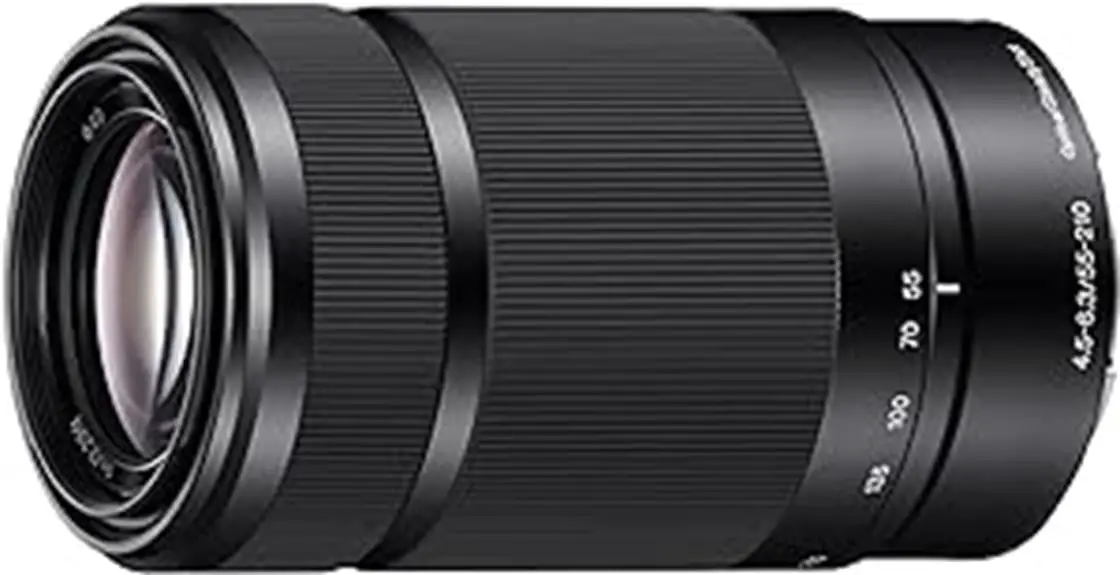
The Sony E 55-210mm F4.5-6.3 Lens is an excellent budget option for travelers using the Sony A7IV, offering a wide zoom range ideal for sports or nature photography. With a minimum focus distance of 3.28 ft and a maximum magnification ratio of 0.23x, this lens allows you to capture detailed close-up shots of your subjects.
It features internal focusing for smooth and quiet operation, as well as optical steady shot image stabilization to minimize camera shake and ensure sharp images. The lens also includes ED glass for reduced chromatic aberration and aspherical lens elements for reduced distortion.
Additionally, the circular aperture enhances the bokeh effect, giving your images a pleasing background blur. Overall, the Sony E 55-210mm F4.5-6.3 Lens offers great value for its price, making it an attractive choice for budget-conscious travelers.
Best For: Travelers looking for a versatile lens that captures stunning sports or nature photography.
- Wide zoom range of 82-315mm (35mm equivalent) for capturing distant subjects with clarity and detail.
- Optical SteadyShot image stabilization for stable video capture
- Lightweight and compact design ideal for travel
- Narrow aperture range may limit low-light performance
- Maximum aperture of f/4.5-6.3 may not be ideal for low light situations.
3. Sony FE 16-35mm F2.8 GM II (Best Premium Option)
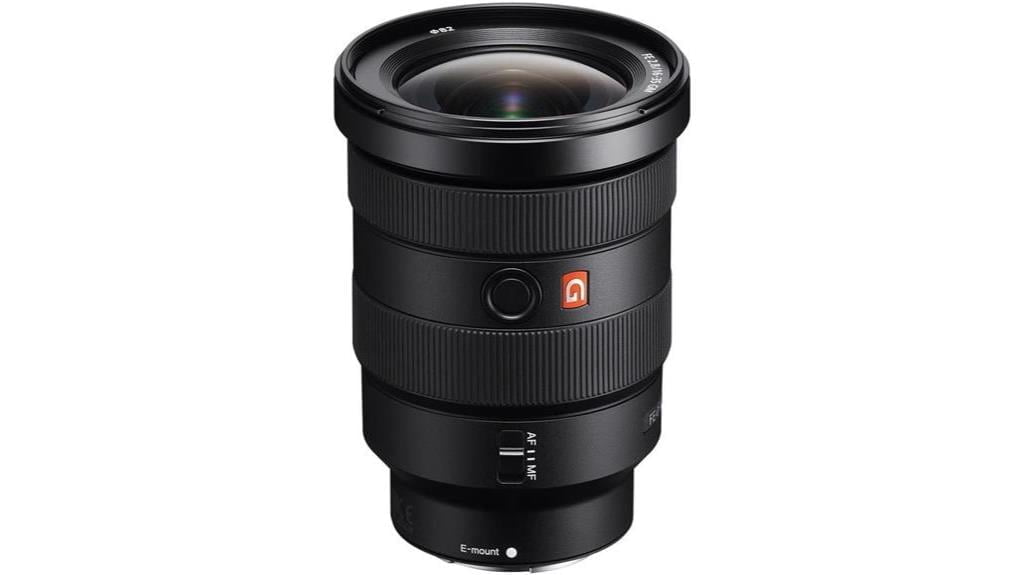
Ideal for photographers seeking exceptional image quality and versatility on their travels, the Sony FE 16-35mm F2.8 GM II lens offers stunning resolution and a constant F2.8 aperture. With its lightweight and strong design, this lens provides crystal clear image quality and remarkable bokeh.
It achieves 50 line pairs/mm resolving power and features two XA elements for high precision. The lens has a minimum focus distance of 0.28m and a maximum magnification ratio of 0.19. Its 11 aperture blades and G Master design ensure smooth bokeh and high resolution.
With an angle of view ranging from 107° to 63°, this lens is a versatile option suitable for various photography needs. Overall, the Sony FE 16-35mm F2.8 GM II lens delivers exceptional performance and is an excellent choice for travel photography.
Best For: Vloggers looking for exceptional sharpness and versatility in their content creation.
- Significant improvement in focus accuracy and sharpness.
- Versatile for both portrait and sports photography.
- High keeper rate of 95% and positive feedback on image quality.
- Potential issues with purple fringing under specific lighting conditions.
4. Sony FE 70-200mm F4 G OSS Lens (Best for High-end Performance)
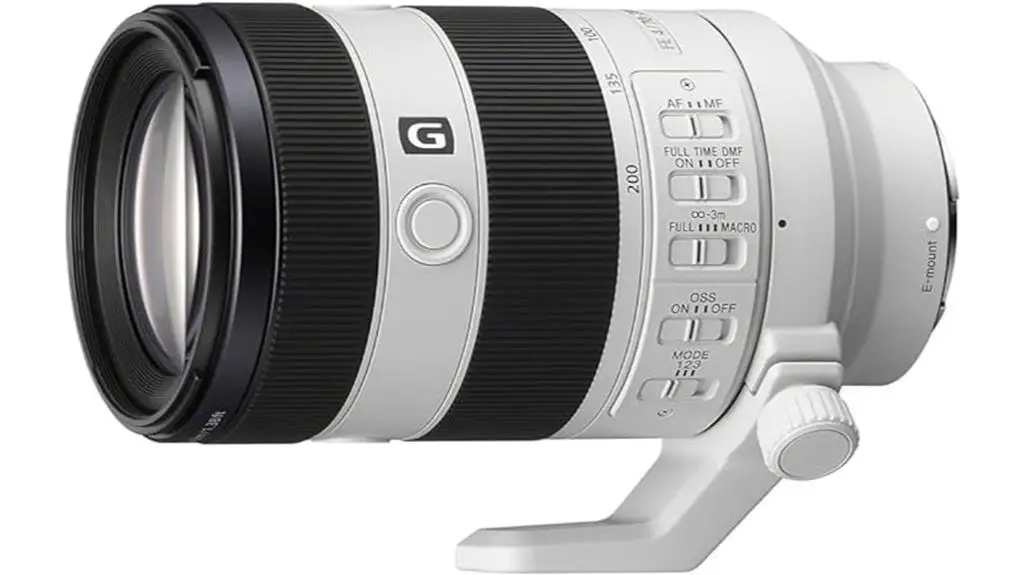
With its advanced lens technology and outstanding optical and AF performance, the Sony FE 70-200mm F4 G OSS Lens is a top choice for photographers seeking high-end performance in their travel lens for the Sony A7IV.
This lens offers a compact and lightweight design, making it ideal for travel photography. It features excellent resolution and contrast, ensuring sharp and detailed images. The lens also suppresses chromatic aberration, resulting in clear and accurate colors.
With its half-macro capability, photographers can capture stunning close-up shots while still maintaining versatility for shooting a wide range of subjects. The circular 9-blade aperture mechanism provides beautiful bokeh, enhancing the artistic quality of your images.
Additionally, the lens is compatible with teleconverters, allowing for even greater reach. With XD linear motors, the lens delivers fast and precise autofocus, ensuring you never miss a shot. Overall, the Sony FE 70-200mm F4 G OSS Lens is a high-performance option that will meet the demands of any travel photographer.
Best For: Wildlife photographers seeking exceptional image quality and versatile macro capabilities in a compact and lightweight telephoto zoom lens.
- Half-macro capability throughout the zoom range.
- Advanced optical technology for outstanding resolution and contrast.
- Compatibility with Sony's teleconverters for increased focal length and macro capabilities.
- Some users may prefer other Sony lenses for superior image quality.
5. Tamron 70-300mm F/4.5-6.3 Di III RXD for Sony Mirrorless Full Frame/APS-C E-Mount (Best Lightweight)
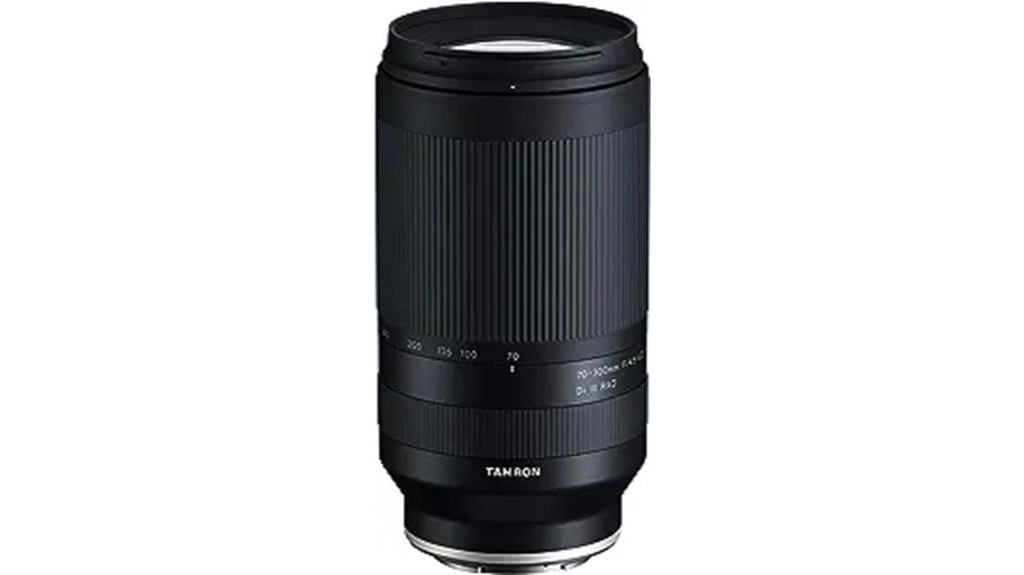
For photographers seeking a lightweight travel lens for their Sony A7IV, the Tamron 70-300mm F/4.5-6.3 Di III RXD is an excellent choice due to its compact design and versatile focal range.
Weighing just 19.2 ounces, this lens is the world's smallest and lightest telephoto lens for Sony full-frame E-mount mirrorless cameras. It features 15 elements in 10 groups, ensuring uncompromising image quality with special lens elements that correct chromatic aberration and other aberrations, resulting in high-resolution images and stunning bokeh.
The lens incorporates the RXD unit for high-speed precision autofocus that is both quiet and efficient. With a 105-450mm equivalent field-of-view on APS-C cameras, it is versatile for various photography genres such as landscapes, sports, wildlife, and portraits.
Overall, the Tamron 70-300mm F/4.5-6.3 Di III RXD is praised for its lightweight design, sharpness, and compatibility with Sony cameras, making it an ideal travel companion.
Best For: Photographers looking for a lightweight and versatile travel lens with good image quality and up-close shooting performance.
- Lightweight design
- Good image quality
- Compatibility with Sony bodies
- Exceptional portability without compromising on image quality.
- Special lens elements to correct aberrations and deliver high-resolution images.
- Quiet and precise autofocus performance with RXD technology.
- Plastic build
- Lack of image stabilization.
6. Sony FE 50mm F1.8 Standard Lens (Best Value)
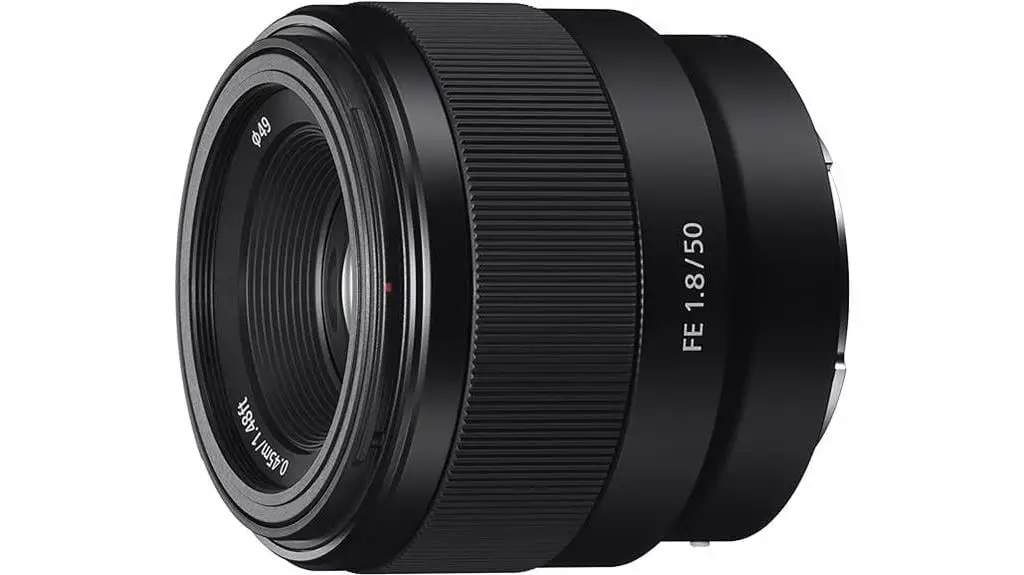
The Sony FE 50mm F1.8 Standard Lens (SEL50F18F/2) is the optimal choice for photographers seeking exceptional image quality and versatile shooting capabilities while on their travels. With its large F1.8 maximum aperture, this lens allows for beautiful defocusing effects and stunning bokeh.
Its compact and lightweight design makes it ideal for full-frame e-mount cameras, ensuring ease of use and portability. The lens features an aspherical element that effectively controls spherical aberration and coma, while its double-gauss configuration suppresses field curvature and distortion.
Customers have praised this lens for its performance in low-light situations and portrait photography. While some users find the autofocus capabilities to be slow and noisy, the lens is still highly recommended for its sharpness, image quality, and affordable price point.
Best For: Travelers seeking an affordable yet high-performing lens for their Sony camera.
- Large F1.8 maximum aperture for beautiful defocusing effects.
- Compact and lightweight design ideal for full-frame E-mount cameras.
- Affordable price without compromising image quality.
- Good image quality with minimal issues like fringing or chromatic aberration
- Autofocus can be a bit noisy.
- Fixed focal length may not provide the versatility some photographers desire.
7. Tamron 28-200 F/2.8-5.6 Di III RXD for Sony Mirrorless Full Frame/APS-C E-Mount (Best All-round)
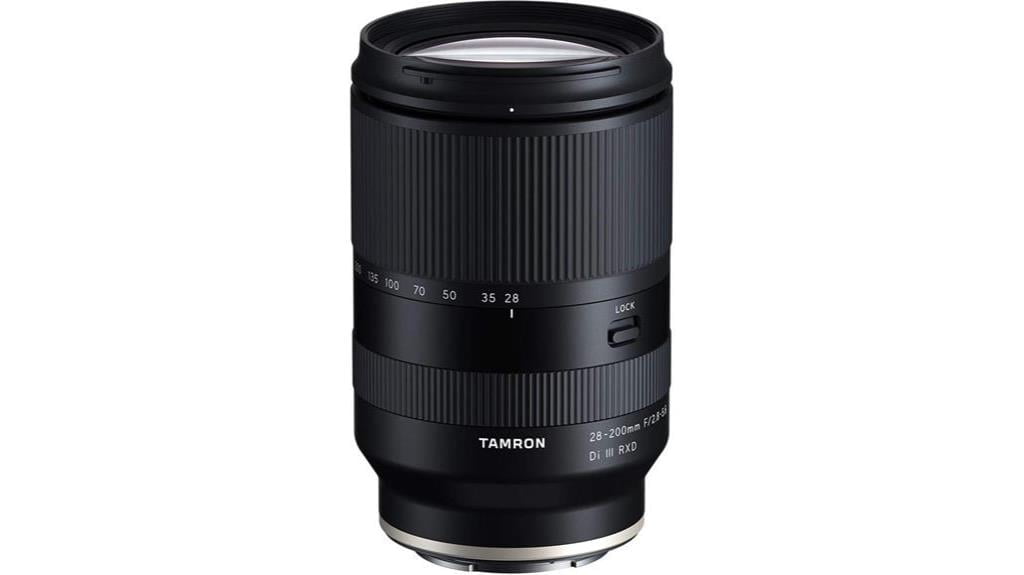
Ideal for travel photographers seeking versatility and convenience, the Tamron 28-200 F/2.8-5.6 Di III RXD lens for Sony A7IV offers exceptional image quality and a lightweight design. This lens is the world's first F2.8 all-in-one zoom lens for full-frame mirrorless cameras, making it a great choice for various photography genres.
With a weight of only 1.27 pounds and compact dimensions of 4.6 x 2.91 x 2.91 inches, it is easy to carry and doesn't add unnecessary bulk to your gear. The lens features a superior up-close shooting performance, with a wide angle of 7.5 and a telephoto angle of 31.5, allowing you to capture stunning close-up shots.
The RXD stepping motor unit ensures quiet operation, making it suitable for wildlife and nature photography. Overall, the Tamron 28-200 F/2.8-5.6 Di III RXD lens is an excellent all-round option for travel, sports, and everyday photography with its exceptional image quality and lightweight design.
Best For: Photographers seeking a versatile all-in-one lens solution with exceptional portability and high-resolution image rendering capabilities.
- Versatile all-in-one zoom lens suitable for various photography applications
- Lightweight and compact design for easy travel and convenience
- Excellent image quality, sharpness, and fast autofocus performance
- Limited maximum aperture range may not be ideal for low-light or night photography
Things to Consider When Choosing the Best Travel Lens for Sony A7IV
When buying a travel lens for your Sony A7III, there are several important factors to consider.
First, the size and weight of the lens can greatly impact your ability to carry it on your travels. Second, the focal length range determines the versatility of the lens for capturing different types of shots. Third, the aperture options affect the lens's ability to capture low-light scenes and create a shallow depth of field.
Additionally, image stabilization technology is crucial for reducing camera shake, especially when shooting handheld. Lastly, it's important to ensure that the lens is compatible with your Sony A7III camera body to ensure optimal performance.
Lens Size and Weight
Consider the size and weight of the lens when purchasing a travel lens for your Sony A7III. Here are four factors to keep in mind:
- Portability: Opt for a compact and lightweight lens that won't weigh you down during your travels. This will make it easier to carry and handle, especially if you're on the move for extended periods.
- Balance: Take into account the overall balance of your camera setup. A heavy lens can affect the stability and ergonomics, making it harder to capture steady shots. Look for a lens that complements the weight of your camera body.
- Versatility: Choose a lens that offers a good balance between focal length range and size. This will allow you to cover a wide range of shooting scenarios without compromising on portability.
- Durability: Consider the build quality of the lens. A sturdy construction will ensure it can withstand the rigors of travel and last for years to come.
Focal Length Range
The focal length range is an important factor to consider when selecting a travel lens for your Sony A7III. It refers to the distance between the lens and the camera's image sensor, and it determines the field of view and magnification of the lens.
A wide focal length range, such as 24-70mm, provides versatility and allows you to capture a variety of subjects, from landscapes to portraits. A telephoto focal length range, like 70-200mm, is ideal for capturing distant subjects and is great for wildlife or sports photography.
On the other hand, a prime lens with a fixed focal length, such as 50mm, offers a narrower field of view but often delivers superior image quality and low-light performance. Consider your shooting preferences and the types of subjects you'll be capturing to choose the focal length range that suits your needs best.
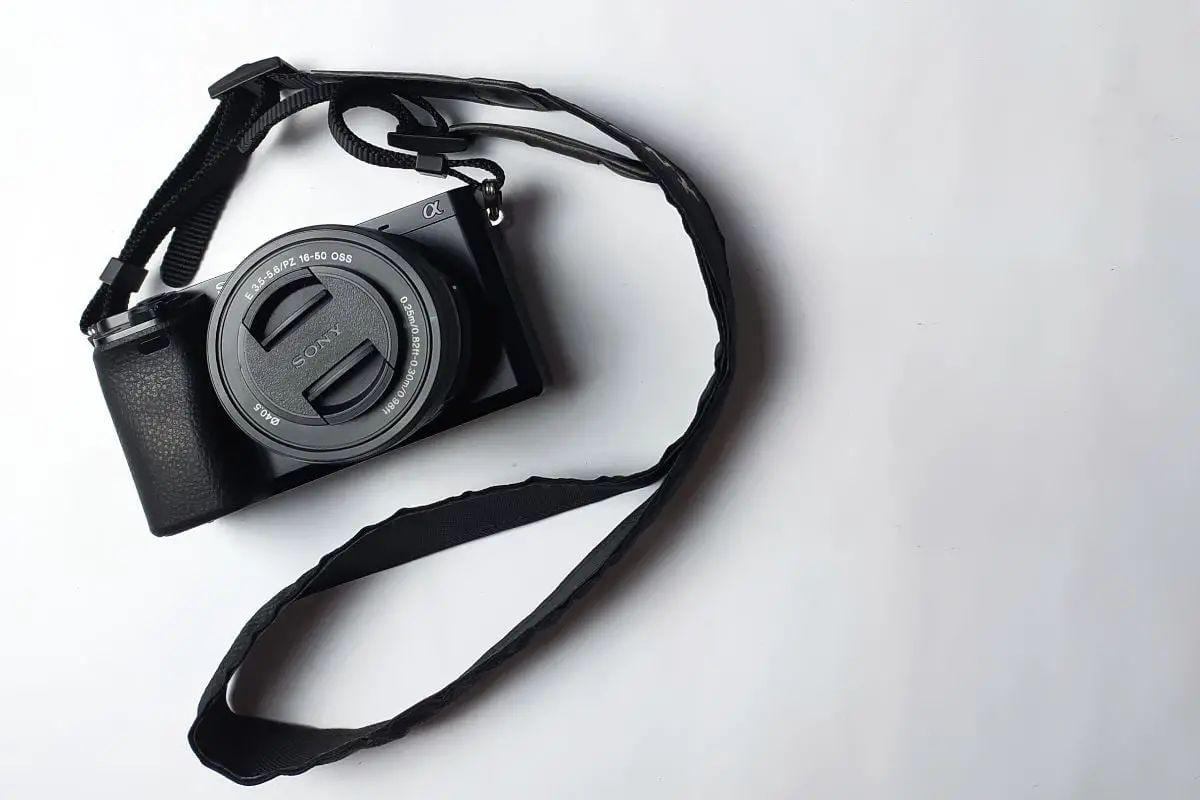
Aperture Options
When selecting a travel lens for your Sony A7III, pay attention to the aperture options available, as they can significantly impact the quality and versatility of your photography. Here are four things to consider when it comes to aperture options:
- Maximum Aperture: The maximum aperture determines how much light the lens can gather, allowing for better low-light performance and the ability to create a shallow depth of field for stunning bokeh effects.
- Minimum Aperture: The minimum aperture controls the amount of light that enters the lens, affecting the depth of field and allowing for greater control over the focus and sharpness of your images.
- Aperture Range: The range of available apertures determines the flexibility of the lens. A wider range allows you to adapt to different lighting conditions and shooting scenarios.
- Aperture Blades: The number and shape of aperture blades can affect the quality of the out-of-focus areas in your images. More blades generally result in smoother and more circular bokeh.
Considering these aperture options will help you choose a travel lens that suits your photography needs and provides the desired creative effects.
Image Stabilization Technology
Image stabilization technology is a crucial factor to consider when purchasing a travel lens for your Sony A7III, as it can greatly improve the sharpness and clarity of your photographs.
This technology helps to compensate for any camera shake or movement, resulting in sharper images, especially in low-light conditions or when shooting handheld. There are two main types of image stabilization technology: optical and sensor-shift.
Optical image stabilization uses lens elements to counteract camera shake, while sensor-shift stabilization moves the camera's sensor to compensate for movement. Both technologies have their advantages and can be effective in reducing blur.
When choosing a travel lens, look for one that offers image stabilization technology to ensure your photos are crisp and clear, regardless of the shooting conditions.
Lens Compatibility
Consider the lens compatibility when purchasing a travel lens for your Sony A7III to ensure optimal performance and functionality. Here are four key things to consider:
- Mount Type: The Sony A7III uses the E-mount, so make sure the lens you choose is compatible with this mount type. This will ensure proper attachment and communication between the lens and camera.
- Full Frame Coverage: The A7III is a full-frame camera, so it is best to choose a lens that provides full-frame coverage. This will maximize image quality and take advantage of the camera's large sensor.
- Autofocus Compatibility: Check if the lens supports the A7III's autofocus system. This will ensure accurate and fast autofocus performance, especially when capturing moving subjects.
- Lens Features: Consider the specific features you need for your travel photography, such as image stabilization, weather sealing, or a versatile zoom range. Look for lenses that offer these features to enhance your shooting experience on the go.
Conclusion
To conclude, the best travel lens for the Sony A7IV offers exceptional versatility and stunning image quality. With its wide focal length range and advanced optical design, this lens is capable of capturing a wide variety of subjects with precision and clarity.
Whether you're shooting landscapes, portraits, or street photography, this lens delivers sharpness and detail throughout the frame. Its fast aperture allows for excellent low-light performance and beautiful background blur, adding a professional touch to your images.
Additionally, the lens is compact and lightweight, making it perfect for travel photography. Its durable construction ensures reliability and longevity, while its autofocus system provides fast and accurate focusing. When it comes to travel photography, this lens is undoubtedly the top choice for Sony A7IV users.

